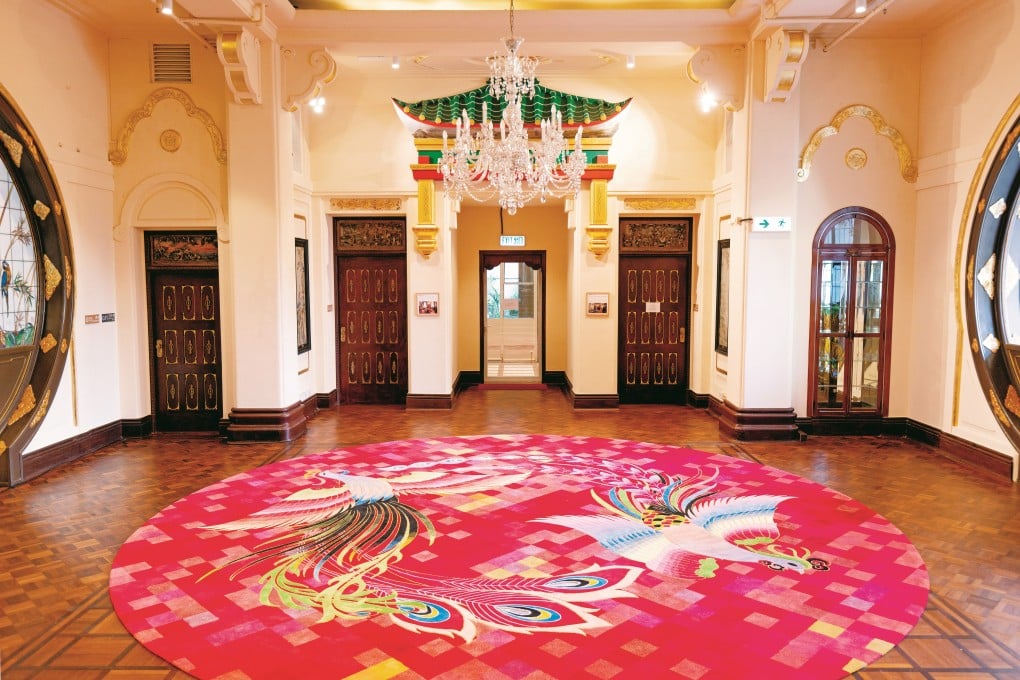Heritage is Innovation show mines past to create future designs, including a carpet literally glowing with Chinese mythology
- Exhibition at Haw Par Mansion gives a respectful nod to history, while pushing the boundaries of 21st-century technology and know-how
- Combining established designers with emerging talents, the show is open to the public until September 30

In the old days, when visitors entered the extraordinary Hong Kong residence Aw Boon Haw created for his family in 1936, they stepped through a moon gate onto a large carpet in the main sitting room. Haw Par Mansion was built in a variety of architectural styles, including Burmese and Indian, but that carpet, with its clouds and dragon and phoenix, was unquestionably Chinese.
Only glimpses of the original remain in faded photos, yet a magnificent version of it has arisen as the centrepiece of an exhibition in the newly restored house in Tai Hang.
This is the third public showcase organised by Design Trust Futures Studio (DTFS), which match-makes established designers with emerging talent. The exhibition’s theme, Heritage is Innovation, uses Haw Par Mansion as a springboard for eight design pairings.
Their brief was to take the past and fashion something original for the future. That is why Elaine Ng Yan-ling has woven, if not exactly a magic carpet, then one that, literally, glows with Chinese mythology.

To achieve this she had to match the most modern technology of which weaving is capable with the requirements of the Hong Kong government’s Antiquities and Monuments Office (AMO). Haw Par Mansion is a grade-one listed building repurposed as a music foundation’s base, and the AMO had opinions about how authentic a six-metre-square floor covering should be. It wanted red; it was also keen on the phoenix motif.